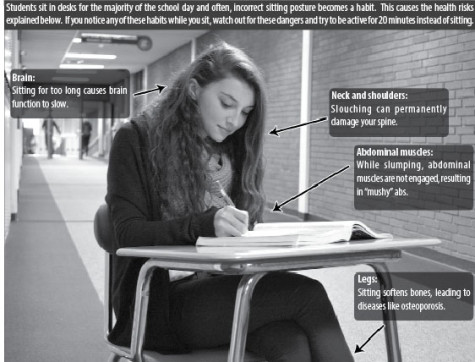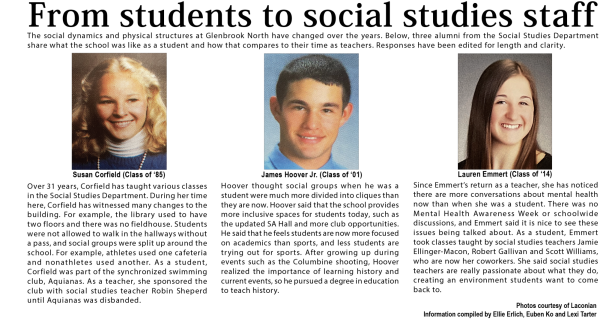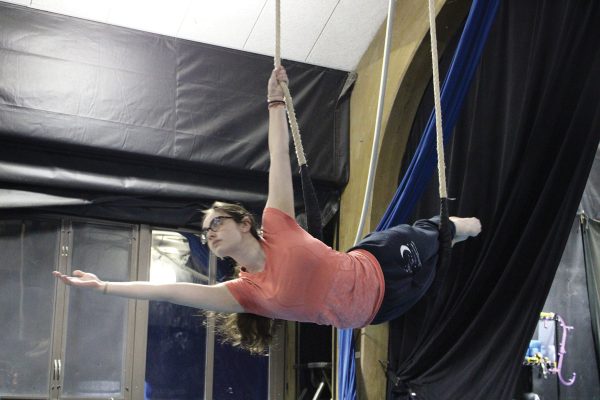Excessive sitting poses health risks

Source: washingtonpost.com
Junior Kamryn Abraskin sits at the back of the classroom, tapping her pencil on the desk with her back slumped, head forward and shoulders limp. The rest of her classmates unintentionally mirror her position.
“It’s hard for me to pay attention when I am sitting for too long,” said Abraskin. “I get restless in the same position, and it’s hard to learn when you struggle to pay attention.”
Abraskin said that in most of her classes, she sits in a desk without getting up for almost the entire block.
English teacher Danielle Fluegge said she tries to encourage sitting less by changing activities in her classroom every 30 minutes.
“I feel really lucky because I came into Glenbrook North … trained on the block schedule,” said Fluegge. “I try to get my students moving with different activities, … either through large group discussions, time when we have conversation in small groups, sitting on the floor, just making sure we are changing positions.”
A new furniture pilot program implemented for second semester could possibly address concerns about excessive sitting, according to Kris Frandson, associate principal for administrative services.
“We are relooking at all the furniture in this district because it has antiquated into that singular desk every classroom has,” said Frandson. “Second semester, we are identifying a couple of different classroom spaces that teachers can check out … Desks where you can raise or lower the table top [to stand] are definitely on the radar.”
Anthony Fiala, former sports medicine physician, said the tedious nature of sitting for extended periods of time inhibits learning.
“If we could figure out a way to … put treadmill desks in all the classrooms, students would actually be able to learn better, because they would be on the move,” Fiala, who is also a science teacher, said.
Christine Pellegrini, research assistant professor of development in technology-based interventions at Northwestern University, said sitting too often is associated with premature death and an increased risk of developing several diseases, including diabetes and cardiovascular disease.
Although Pellegrini said an ideal amount of sitting time has not been identified, some research has shown that substituting 20 minutes of sitting with activity can influence cardiometabolic factors.
“[When researchers] have an individual replace 20 minutes of sitting with 20 minutes of light intensity or moderate-to-vigorous intensity physical activity, decreases in postprandial glucose, insulin and resting blood pressure are observed,” Pellegrini said.
Sitting negatively affects the body physiologically as well. Fiala said sitting for hours at a time on a daily basis over the course of many years can lead to irreversible changes in posture and shortened hamstrings. His experience as a sports medicine physician has shown him firsthand the effects of excessive sitting.
“I used to work with baseball players on their posture, just because if they have better posture, they have better control over the ball,” said Fiala. “What I noticed was that with younger kids, it was easier to reposition their posture. If we were taking older, high school kids, it was much more difficult to teach them. Not because they couldn’t learn, but because their bodies have undergone changes … from the effects of sitting for too long.”
Setting reminders to take standing breaks on smartphones, watches or computers is a good way to spend less time sitting, according to Pellegrini.
Abraskin said that to lead a healthy lifestyle, changes in the classroom are necessary.
“I would love to see different types of desks that allow some sort of movement or standing,” said Abraskin. “It would be beneficial to teachers and students because it would help us concentrate, and in the long term, students would be healthier.”











